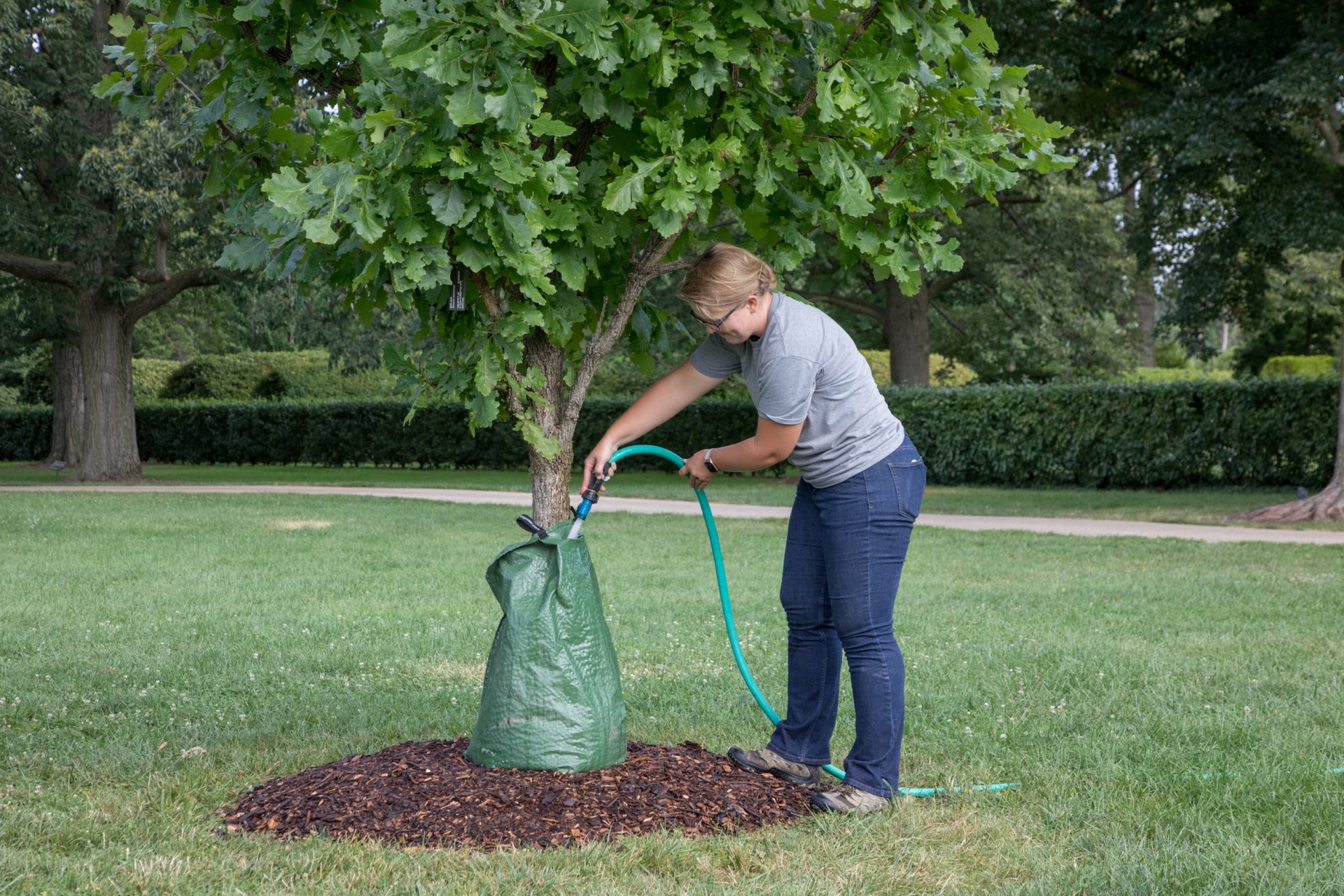Weather extremes and the prospect of continued global warming require us to understand the special care trees need in the event of drought.
Drought stress develops in plants when the available soil water becomes limited. As this happens, young roots are killed outright, reducing the plant’s ability to absorb sufficient water. The soil also becomes hard and compact as it dries, reducing oxygen to the roots. If landscape plants (trees, shrubs, and ground covers, especially evergreen types) do not receive adequate rainfall or supplemental watering, heavy plant loss is likely.
Water trees and shrubs during extremely dry soil conditions. If you have to choose, water your trees and not the grass since grass will turn green again when water is available. For water conservation, it is best to not water your lawn at all. Trees, on the other hand, will show subtle signs of drought, with wilting or dropping leaves. Yet they can be seriously injured or die without water.
Summer is the most stressful time for landscape plants. Without enough moisture, plants can’t function normally and are predisposed to damage by pests or disease. Generally speaking, those most at risk are newly planted or transplanted trees without extensive root systems or other plants with underdeveloped or damaged root systems.
When watering trees, shrubs, and other landscape plants, remember that they absorb water and nutrients through their roots, most of which are in the upper 1 to 2 feet of soil. The goal is to keep plant roots moist, but not wet. Constantly saturated conditions also can damage roots.
Watering and Other Tips During Drought
Depending on air temperatures, trees and shrubs need at least 1 inch of water applied every week to 10 days to cope with lack of rain. Larger, established trees have a wide-spreading root system and need not be watered as frequently, perhaps every two to three weeks. Let the top few inches of soil dry out between watering to avoid saturation and to allow roots and soil organisms to breathe.
Water slowly and deeply so water percolates down into the soil, giving one or two deep waterings rather than several light ones.
Use soaker hoses and drip irrigation, effective watering tools because they discharge even streams of slow, trickling water directly to the root zone beneath trees and shrubs. When combined with a 3- or 4-inch layer of organic mulch, plants can use nearly all of the water that’s provided with little evaporation loss.
Another effective means of watering a small tree is letting a hose run slowly at its base until the ground is moist. For large trees, let the hose run at various points around the tree’s drip line, the imaginary line on the ground that encircles a tree’s extended branches.
Water shrubs at the plant base and under the spread of branches until soil is moistened to a depth of 6 to 8 inches. When using a sprinkler system, place a container nearby to measure when you have distributed 1 inch of water to the soil.
Plants vary in their ability to tolerate water stress. Prioritize watering, caring for newly transplanted trees and shrubs first, then those that have been in the ground from two to five years. Next, water “specimen” trees or important trees, then all other plants.
Water strategically. Plants absorb more water in the early morning, before the warming sun causes evaporation. Avoid using fertilizer during drought conditions. Fertilizer salts can cause root injury when soil moisture is limited.
